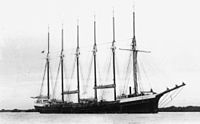
Maritime archaeology is a discipline within archaeology as a whole that specifically studies human interaction with the sea, lakes and rivers through the study of associated physical remains, be they vessels, shore-side facilities, port-related structures, cargoes, human remains and submerged landscapes. A specialty within maritime archaeology is nautical archaeology, which studies ship construction and use.

Underwater archaeology is archaeology practiced underwater. As with all other branches of archaeology, it evolved from its roots in pre-history and in the classical era to include sites from the historical and industrial eras.

The Neptune Islands consist of two groups of islands located close to the entrance to Spencer Gulf in South Australia. They are well known as a venue for great white shark tourism.

The Nautical Archaeology Society (NAS) is a charity registered in England and Wales and in Scotland and is a company limited by guarantee.
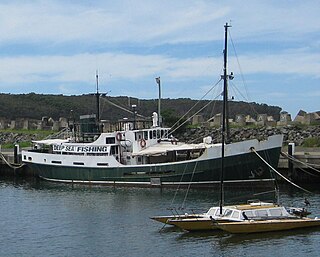
HMAS Banks was an Explorer class general-purpose vessel of the Royal Australian Navy (RAN), serving in a range of capacities from 1960 until 1995. She was named in honour of Sir Joseph Banks, the botanist aboard HM Bark Endeavour during the discovery of the eastern coast of Australia in 1770.

HMS Buffalo was a storeship of the Royal Navy, originally built and launched at Sulkea, opposite Calcutta, in 1813 as the merchant vessel Hindostan. The Admiralty purchased her that year after she arrived in Britain. She later transported convicts and immigrants to Australia, before being wrecked in 1840.

Margaret Helen Rule was a British archaeologist. She is most notable for her involvement with the project that excavated and raised the Tudor warship Mary Rose in 1982.

Loch Vennachar was an iron-hulled, three-masted clipper ship that was built in Scotland in 1875 and lost with all hands off the coast of South Australia in 1905. She spent her entire career with the Glasgow Shipping Company, trading between Britain and Australia. The company was familiarly called the "Loch Line", as all of its ships were named after Scottish lochs. The ship was named after Loch Venachar, in what was then Perthshire.
The Loch Line of Glasgow, Scotland, was a group of colonial clippers managed by Messrs William Aitken and James Lilburn. They plied between the United Kingdom and Australia from 1867 to 1911.
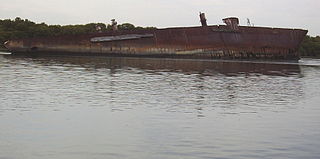
The Santiago was a 455-ton barque launched in 1856. It was built by Henry Balfour of Methil, Fife for the Liverpool shipping company Balfour Williamson. It sailed mainly between Liverpool and Chile, but also to Australia. Its remnant hull, which lies in a ships' graveyard in South Australia, was considered 'the oldest intact iron hull sailing vessel in the world', until part of the central section collapsed in January 2023.

Peter Christopher, OAM, is an Australian author and photographer who writes about shipwrecks and riverboats. He is also a Director of the not for profit organisation, Clipper Ship City of Adelaide Ltd (CSCOAL), set up to save the 1864 clipper ship, City of Adelaide.

SS Clan Ranald is a steamship wreck off the coast of South Australia that is of unique historic importance. She is the only example in Australian waters of a turret deck ship: a type of steel-hulled cargo ship with an unusual hull shape that was built in the 1890s and 1900s.
The Nautical Archaeological Association of South Australia (NAASA) was an amateur maritime archaeology organisation which was founded in 1982 by individuals who resigned from the Society for Underwater Historical Research (SUHR) in April 1982 following a dispute. The association is believed to have ceased operation in the early 1990s.
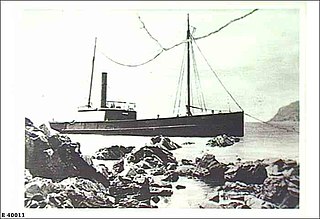
Ellen was a steamship that was launched in 1883 and whose career involved coastal shipping firstly in the Colony of Queensland and then in the Australian state of South Australia. It was wrecked in Gulf St Vincent in South Australia at Morgan's Beach near the town of Cape Jervis on Saturday, 12 December 1908 during its return from fishing in waters around Kangaroo Island to a destination on the mainland.
Frances was a cutter built in 1839 at Encounter Bay, South Australia. It was wrecked on South Neptune Island on 29 August 1840. It was reported that the crew survived the wrecking event, came ashore and survived on a diet of penguin for 50 days before sending 2 people in a dinghy to Port Lincoln to seek help. Those remaining at South Neptune Island were subsequently rescued. While the wreck site is protected by the Commonwealth Historic Shipwrecks Act 1976 and its location is recorded as being at 35°33′00″S136°12′00″E, as of 2004 it had not been found.
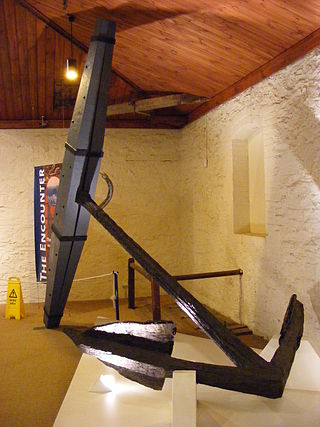
The HMS Investigator Anchors are the two anchors that jettisoned from HMS Investigator on the morning of Saturday, 21 May 1803, by her commander, Matthew Flinders, in order to avoid running aground on Middle Island in the Archipelago of the Recherche on the south coast of New Holland. In 1973, the anchors were located and recovered by members of the Underwater Explorers Club of South Australia (UEC). The recovered anchors became the subject of an ownership dispute between various governments, particularly those of South Australia and Western Australia due to their historic significance as artefacts of a major voyage of European exploration. The dispute was resolved with the ownership of the anchors going to the Australian Government who subsequently gifted one of the anchors to the South Australian Government. The pair of artefacts is also known as Flinders' Anchors.
Water Witch was a single-masted vessel rigged as a cutter built during 1835 in Van Diemen's Land and sunk in 1842 whilst moored in the River Murray at Moorundie, south of Blanchetown in South Australia (SA). Her wreck site was discovered in 1982 and received statutory protection as a historic shipwreck in 1983. The wreck site was the subject of an underwater survey in March 1984. She was the first European vessel to enter the River Murray via its mouth, her role in the charting of the lower reaches of the River Murray including Lake Alexandrina whilst under the command of William Pullen and her association with Edward John Eyre.
Save Ontario Shipwrecks (SOS) is a Provincial Heritage Organization in Ontario, Canada. SOS is a public charitable organization which operates through Local Chapter Committees supported by a Provincial Board of Directors and Provincial Executive.

Lady Kinnaird was a three masted barque which was built in 1877 at Dundee, Scotland by Brown & Simpson for W.B. Ritchie. She operated between the United Kingdom and the Australian colonies. She was lost after running aground in Spencer Gulf south of Cape Burr on the east coast of Eyre Peninsula in South Australia early on 21 January 1880. Her main anchor was recovered from her wreck site in 1979 and was placed on display in the nearby town of Port Neill in January 1880 as part of the commemoration of the centenary of her loss.
Zanoni was a ship built in Liverpool, England in 1865 by W. H. Potter & Co as a 338-ton composite barque. It was owned by Thomas Royden & Sons who intended to use it for the East India trade.






